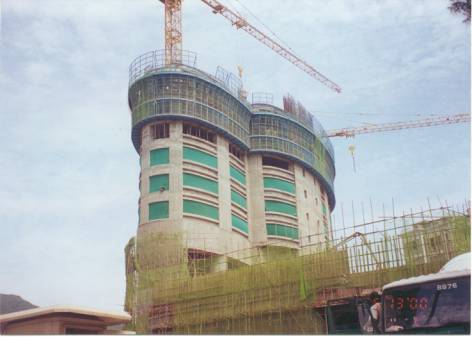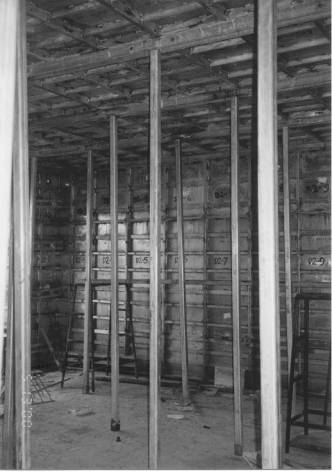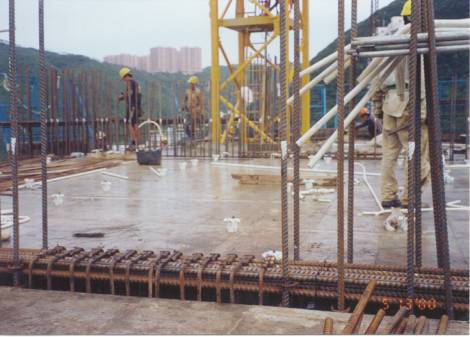| Notable Features |
| |
 |
Application of
Aluminium formwork |
 |
The wastage of
aluminium formwork was nearly zero. |
 |
The wastage of
reinforcement was 10%. |
 |
The wastage of
concrete was 5%. |
 |
The contract sum
for aluminum formwork was HK$13,000,000. |
 |
The material cost
is HK3,000/m2 |
 |
The labour cost
was
HK$350 per manday. |
 |
Use of gondola to
apply external finishes |

| Basic
Information |
| |
 |
Location: Stubbs
Road, Hong Kong |
 |
Building Type: Residential |
 |
Contract Period:
4/8/1999 – 22/8/2001 |
 |
Gross
Floor Area: 55,654m2 |
 |
Client:
Highdiff Investment Limited |
 |
Architect: Dennis
Lau Wing Kwong Architects & Engineers (H.K.) Ltd. |
 |
Structural Engineer:
Can West Consultant Ltd. |
 |
E&M
Consultant: Associated Consultants (International) Ltd. |
 |
Quantity Surveyor: Davis
Langdon & Seah (H.K.) Ltd. |
 |
Main Contractor: Hip
Hing Construction Co., Ltd. |
 |
Contract Sum: HK$
919 million |

| Overview |
| |
| Proposed
residential redevelopment at I.L. 8290 Stubbs Road was a residential building project and
the following major items were executed under this contract: |
| |
 |
Construction of 7
storey podium & 217m high residential building
above podium level, comprising 59 storey of residential
floor, 2 storey of refuge rooms and 2 floors for roof plant
and tank room. |
 |
Construction of curtain wall. |
|
|
|
|

|
|
External
Finishing
|
|
|
|
External working platform and
gondola were used to apply external finishes. This saved the waste of
bamboo scaffolding.
|
|
|
|

|
|
Aluminium
Formwork
|
|
|
|
One set of
Mivan formwork was used to achieve a four day floor cycle for
construction of the 61 storeys block. Additional time was
required for construction of the initial floors to allow for
setting up of the Mivan formwork system and to initiate the
other trades in the procedures which were required to meet the
target floor cycle. The Mivan formwork can be reused for
over 100 times.
|
|
|
|

|
|
Contact
of Contractor
|
|
|
|
Hip Hing Construction Co., Ltd.
|
|
29/F,
New World Tower, 16-18 Queen's
|
|
Road
Central, Hong Kong
|
|
Tel:
(852) 2525 9251
|
|
Fax:
(852) 2845 9295
|
|
|
|

|
|
|
![]() |
|
|

|
|


